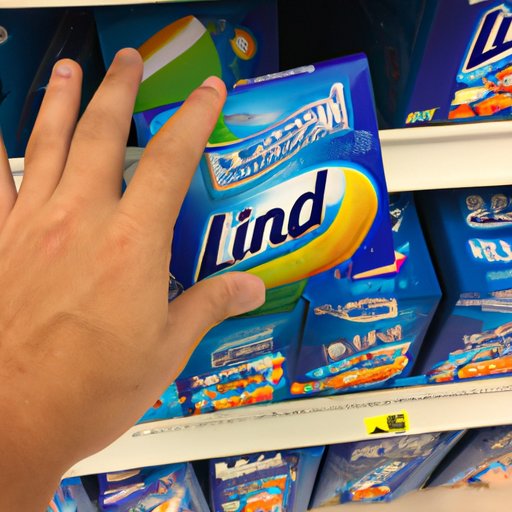Introduction
It’s no secret that eating healthy can be expensive. Fruits, vegetables, lean meats, and other nutritious foods can often be more costly than processed, packaged, and fast food options. However, it is possible to eat cheap and healthy. With the right strategies, you can save money and still make nutritious choices.
Definition of Eating Cheap and Healthy
Eating cheap and healthy refers to being able to purchase nutritious food while also staying within a budget. This can mean different things depending on the individual—some may have a tight budget, while others may simply want to find ways to save money while still eating healthily. Ultimately, eating cheap and healthy means finding ways to get the most nutritional bang for your buck.
Overview of the Problem
Many people struggle to make healthy choices due to financial constraints. According to the Centers for Disease Control and Prevention, “people with limited incomes may choose less healthy options because they cost less.”1 Furthermore, research has shown that higher-income individuals are more likely to buy healthier foods than those with lower incomes.2 For those living on a tight budget, eating healthy can seem like an impossible task.
Planning Ahead
The key to eating cheap and healthy is planning ahead. Meal planning is essential for saving money and ensuring you have nutritious meals throughout the week.
Benefits of Meal Planning
Meal planning saves time, money, and stress. When you plan out meals for the week, you know exactly what ingredients you need to buy and how much of each item you need. This eliminates the need to make multiple trips to the store, which can save both time and money. Additionally, having a plan for meals helps reduce decision fatigue, so you don’t have to spend time trying to figure out what to eat each day.
Creating a Grocery List
Creating a grocery list is essential for sticking to your budget. Before heading to the store, make a list of all the items you need. This will help you stay focused and avoid impulse buys. Be sure to include plenty of fruits and vegetables, as well as lean proteins, whole grains, and healthy fats.

Taking Advantage of Store Brands or Generic Brands
Another way to save money while eating healthy is to take advantage of store brands or generic brands. These products are typically cheaper than name brand items, but they can still provide quality nutrition.
Benefits of Buying Store or Generic Brands
Buying store or generic brands can save you a significant amount of money. According to a study from Consumer Reports, store brands are 30 percent cheaper than name brands on average.3 Additionally, store brands can offer just as much nutrition as their name brand counterparts.
How to Find Quality Store or Generic Brands
When shopping for store or generic brands, look for products that are certified organic, Non-GMO Project Verified, or USDA Certified. These labels indicate that the product is free of synthetic pesticides, fertilizers, and other potentially harmful ingredients. Also, check the Nutrition Facts label to ensure the product meets your dietary needs.
Buying in Bulk
Buying in bulk can also be a great way to save money while eating healthy. Buying larger quantities of items such as dried beans, nuts, and grains can help you save money in the long run.
Benefits of Buying in Bulk
Buying in bulk can help you save money over time. Bulk items are usually cheaper per unit than individual packages, so you can get more product for your money. Additionally, buying in bulk reduces waste since you don’t have to throw away individual packaging.
Tips for Buying in Bulk
When buying in bulk, look for items that have a long shelf life and that you know you will use. Dried beans, nuts, grains, spices, and oils are all good options. Also, make sure to store bulk items in airtight containers to keep them fresh.
Buying Produce in Season
Buying produce in season can also help you save money while eating healthily. Produce that is in season is typically cheaper and often tastes better.
Benefits of Buying Produce in Season
Produce that is in season is usually fresher and more flavorful than out-of-season produce. It is also usually cheaper, since it is more abundant. Additionally, buying in-season produce is better for the environment, since it requires less energy to grow and transport.
How to Know When Produce is in Season
To find out when certain produce is in season, do a quick online search. You can also check your local farmers market for seasonal produce. Additionally, many stores will label produce with its country of origin. Produce that is grown locally is often in season.
Cooking at Home
Cooking at home is one of the best ways to save money while eating healthy. Preparing meals yourself allows you to control the ingredients and portion sizes, so you can ensure you are getting the most nutrition for your money.
Benefits of Cooking at Home
Cooking at home can save you time and money compared to ordering takeout or eating out. Additionally, it gives you more control over the ingredients and portion sizes. You can also experiment with different flavors and recipes to find something you enjoy.
Tips for Cooking at Home
When cooking at home, try to use fresh, whole ingredients whenever possible. Fresh produce is usually more nutritious than canned or frozen varieties, and it can add flavor to your dishes. Additionally, try to double up on recipes and freeze leftovers for easy meals throughout the week. This can save you time and money in the long run.
Conclusion
Eating cheap and healthy is possible with the right strategies. Planning ahead, taking advantage of store brands or generic brands, buying in bulk, buying produce in season, and cooking at home are all great ways to save money while still making nutritious choices. With these tips, you can eat well without breaking the bank.
Summary of Ideas Presented
In this article, we explored how to eat cheap and healthy. We discussed the importance of meal planning, taking advantage of store brands or generic brands, buying in bulk, buying produce in season, and cooking at home. By implementing these strategies, you can save money and still make nutritious choices.
Final Words of Encouragement
Eating healthy doesn’t have to be expensive. With the right strategies, you can make nutritious choices while still staying within your budget. So don’t be discouraged if you’re on a tight budget—there are still plenty of ways to eat cheap and healthy.
(Note: Is this article not meeting your expectations? Do you have knowledge or insights to share? Unlock new opportunities and expand your reach by joining our authors team. Click Registration to join us and share your expertise with our readers.)
